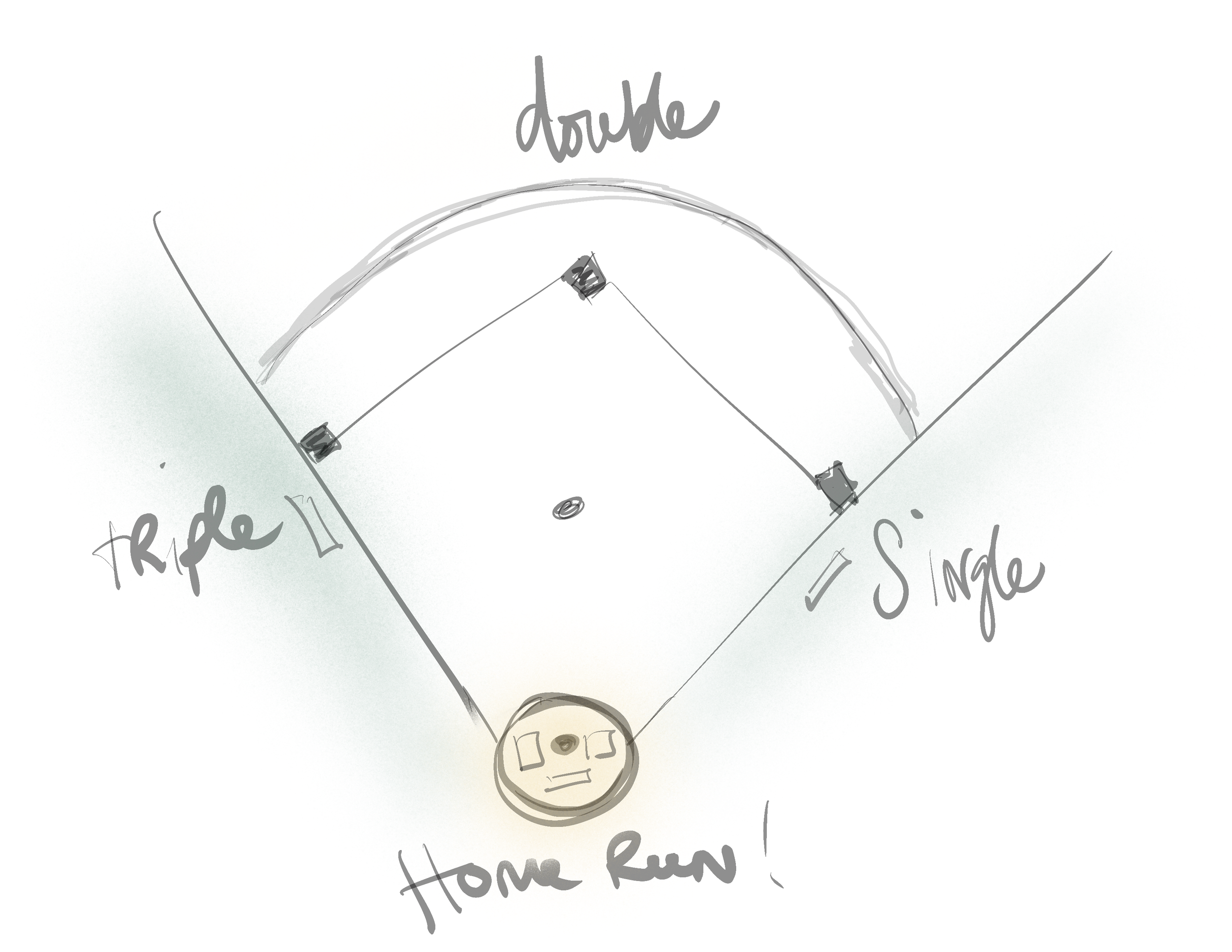Playing Field: My go-to method for defining success
When facilitating teams embarking upon strategic work, one of the most important alignment exercises you can cover is defining what success looks like.
Teams tend to get into a lot of trouble when they get too far down the road without first tackling this step because success looks different to everyone, from the CEO to the designer and/or developer. That means it’s critical to get everyone on the same page with regard to these metrics, and what better way than with a collaborative exercise?
My go-to is the playing field method, where success is defined by the participants in terms of good, better and best. Those milestones can refer to interim goals that happen en route to a home run, or different versions of success that range from most realistic to most ambitious.
Here’s how it works:
Use the reference image above to sketch a playing field on the board, marking the single, double, triple and home-run bases, then set a time horizon for the exercise (never heard of time horizons? Read this short post).
For example, let’s say I asked the group to define what success looks like in 12–18 months if we do everything right and achieve what we set out to do. At that point, what do we want to say is true? How will we know we’re successful?
To capture their answers, you can go a couple of different routes. If there’s a lot of divergence in the group, known introverts, or serious politics that would deter someone from contributing, let participants work independently first. Either pass out sticky notes so individuals can write and add their suggestions to the board, or call on each person to share their thoughts.
If the group seems copacetic, you can skip straight to capturing inputs by having participants shout out their answers.
Either way, make sure everyone’s ideas are represented on the board to give the group a starting point in the discussion. Ask the team to define success metrics for important items (e.g. how will they know they’ve reached the goal they set?), which will require group consensus and buy-in. And that means fewer surprises and misalignments down the road once the work has begun.
Final tip: Budget enough time for this exercise. In my experience, it can take up to an hour to get through the activity with 7–10 people in the room, so plan accordingly based on your group size.
This method is attributed to my time at GoKart Labs where the idea was cultivated and refined by a group of makers (and probably the best set of colleagues I’ve ever worked with ❤).

